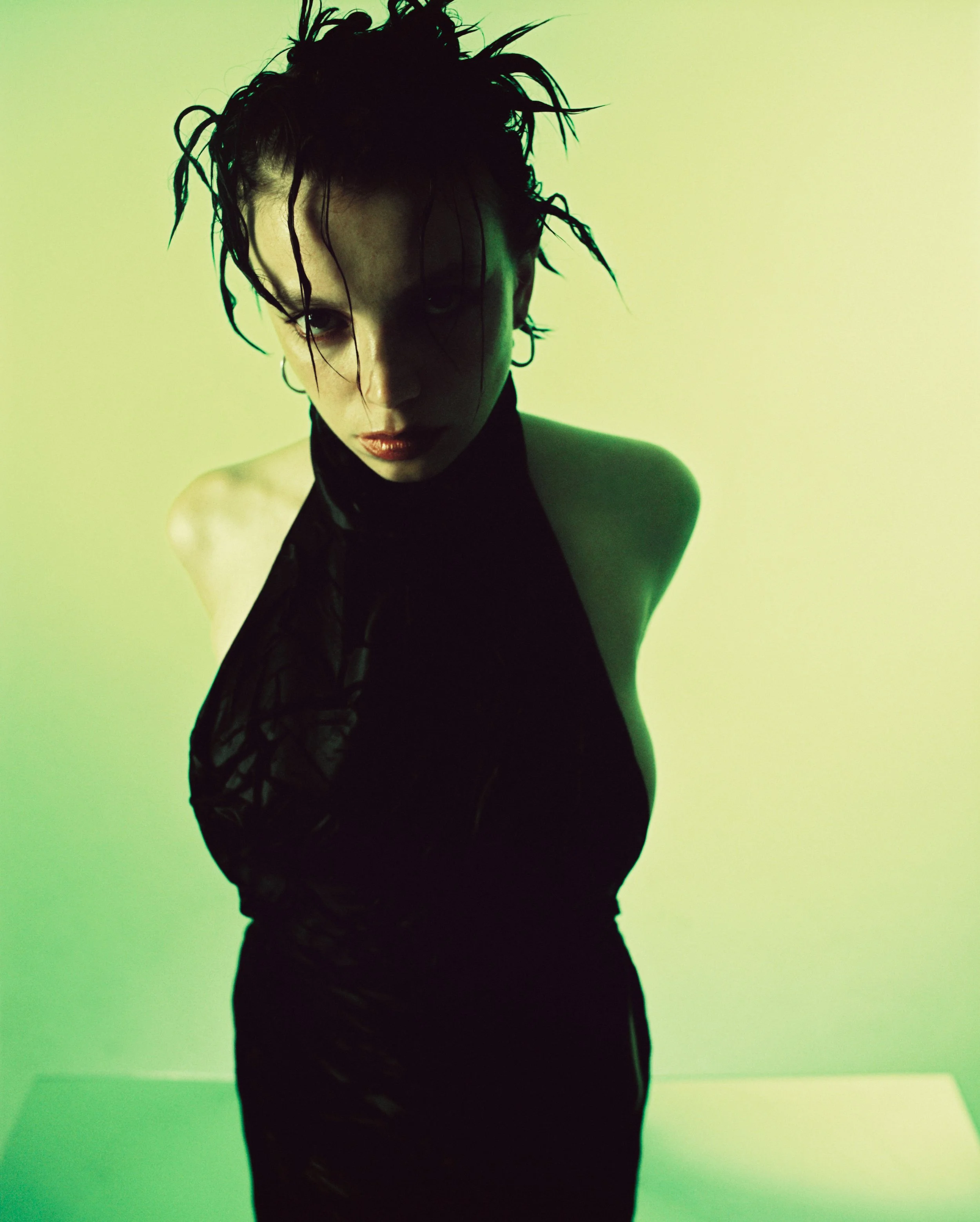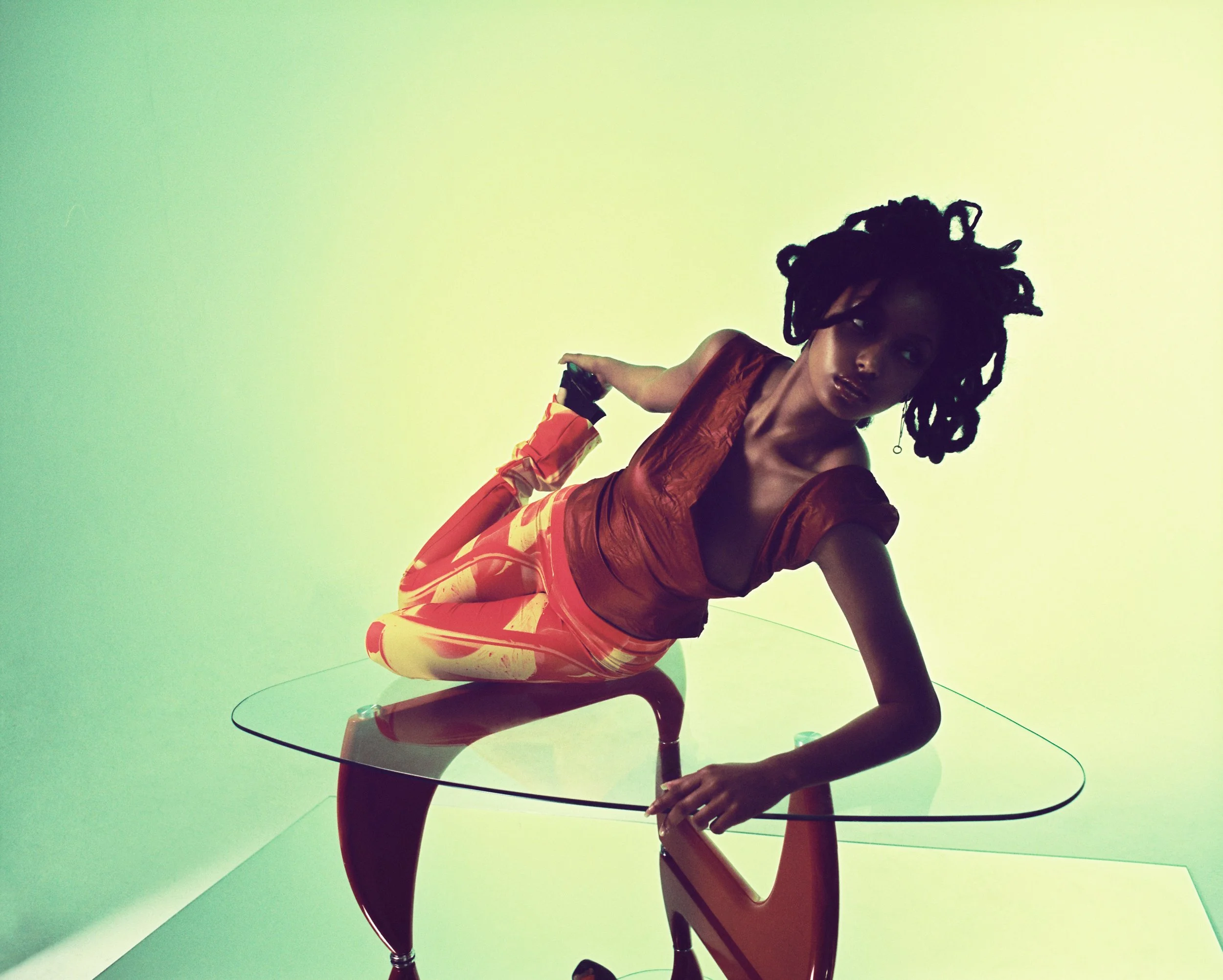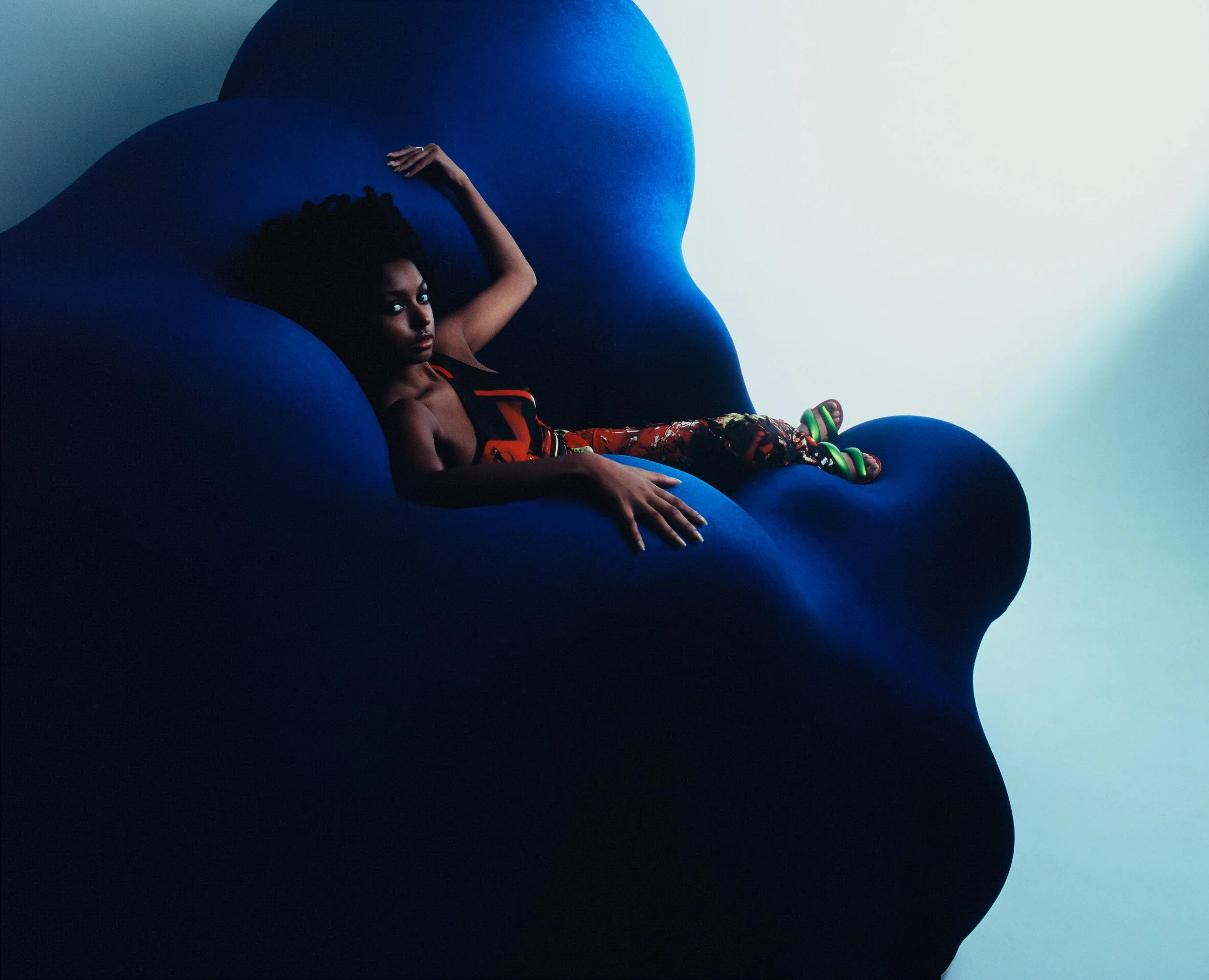Fashion designer Tara Hakin discusses the dangers of clout-chasing, the future of fashion and her new collection.
“Creative work has always been what I knew I would end up doing,” admits 26-year-old fashion designer Tara Hakin. Growing up in the quiet coastal town of Donaghadee - roughly a 40 minute drive from Belfast, Northern Island - the now London-based creative remembers the teachers throughout her life who encouraged her venture towards the arts. “I was lucky in that I had a great art teacher who was very encouraging towards me since I was little - unusual, I suppose, for my Northern Ireland upbringing as you’re not really taught to pursue anything creative post-school unless it's something more traditional like painting.”
For her latest collection, Hakin collaborated with emerging London photographer Jesse Crankson. “I had been admiring Jesse's work for a while before he reached out saying he would like to set up a shoot,” she explains. “I'm really attracted to the abstraction of Jesse’s images and his use of textures; I reckon that's why our work compliments each other so well.” Below, we speak to Tara about the dangers of clout-chasing, the future of the fashion industry and the ins and outs of the Tara Hakin brand.
Perfect: Why did you get into fashion?
Tara Hakin: It was never a conscious decision to be honest, nor was it about making clothes to wear I guess. I was always, in the beginning, more inclined towards making sculpture-based pieces, which I still love to do. Choosing fashion was more about having an outlet to make things, and to conceptualise an idea into a 3D piece. As I got older and more interested in fashion as an art form, I’ve been led down that path.
Perfect: Is there anything about the fashion industry that you feel wary of?
Tara Hakin: Social media is quick to give young designers and new people entering the industry a lot of hype very quickly, especially with added celebrity attention. This is all very exciting for a while, but as clout-chasing has become the malady born out of the speed of which new fashion is being consumed, social media doesn’t necessary guarantee personal sustainability for young, independent designers but rather threatens us with wear and burnout.
Perfect: Can you talk about Belfast, in comparison to London, creatively?
Tara Hakin: They're complete polar opposites from my experience. The political climate in Northern Ireland unfortunately didn’t allow for much treatment for early on-set creativity, so you’re very much deterred from it in order to focus on more traditional career paths, which is a shame. There are so many exceptionally talented people from Ireland as a whole, but I think, especially in the North, there isn’t much to nurture creativity in the education system and you have to really fend for yourself if you even want to think about making it into a career.
Perfect: Was London always the dream?
Tara Hakin: Honestly no. I think it’s important to acknowledge the opportunities in London as a city with its own microcosm where the industry mechanism is already at work, but I don’t necessarily believe any specific geographic location, being itself alone, has enough allure to sell an ambition already integral to my lived experience. Though I certainly haven’t always pictured myself doing my own thing, and maybe other people did, for a while I had I always imagined working for someone else. I’ve tried to chase after ‘dream jobs’, however, and got told I had too much of a personal direction, which, when you're looking for financial stability, isn’t exactly the kind of compliment you’d want to hear.
Perfect: Talk me through this collection.
Tara Hakin: This one’s quite close to my heart. It is a small body of work that gives a glimpse into my direction for this year, a sort of a teaser for what I’m planning to produce hopefully by 2022’s end.
I knew I wanted to be more ambitious with the scales of my output. When we entered the March 2020 lockdown, I couldn't get out to find new research materials, so I used a lot those I had collected so far since my graduation to broaden and deepen my scope of critical engagement. I knew I wanted to incorporate print into my new work, and while revisiting my university file, I came across an image of an old leather piece of mine, loved the still life shot of the back, and thought it could make an interesting print.
I feel like each piece within this project embodies some elements of my process, so I believe they can, in the future, give a sharp reflection of the Tara Hakin canon, showcasing aspects of textile manipulation, trompe l'oeil prints, collaborations with friends, draping and leather work.
I collaborated with my friend and Artist, An Nguyen on a lot of the print material for this collection, An also shot some beautiful images of our friends hair, with the resulting hair print ,most recently a silk column dress bearing it. Since then An has shot imagery that we collaborated on which has included new motorbike & car imagery, and also my favourite, the Red Bandage print. The graphics are then sublimation-process printed onto fabric and the garment just finishes itself from there.
I like the idea that some of my pieces bear a visual indecipherability, where no one can really tell exactly what it is at first, or what its made of. The red look features an image of a car crash, which has become a fascination thanks to its abstract textures. I did come across the car crash studies by Nicolai Howalt and his interpretations have stuck with me since.
Perfect: Talk me through your design process.
Tara Hakin: My process is entirely 3D oriented - I’ve opted out sketching in favour of realising my ideas directly into a sample piece. This in turn will be through intuitive free-hand draping on a mannequin, and really anything to let my designs manifest themselves organically. I try not to be too precious when designing, I find it provokes more interesting ideas when things aren’t too contrived!
Perfect: How would you describe your brand?
Tara Hakin: Tara Hakin is about garments in their objecthood, their materiality being the basis of experimentation and about taking the wearer’s sensuality as a form of celebration and emboldenment.
Perfect: Which designers/artists do you look up to?
Tara Hakin: I love the sensuous drama of Olivier Theyskens, the theatrical spirit and eclecticism of Galliano and the futurism of Ottolinger. From a Costume Design perspective I’m in awe of Whitaker Malem’s finesse, I particularly admire their work in the film industry and the quality applied to their leather moulded pieces to me exemplifies the highest level of craftsmanship.
Perfect: What is the future of the fashion industry?
Tara Hakin: I certainly think young and independent designers now have a greater say about their own future, and will continue to enjoy this relative freedom in part thanks to social media where in recent years, direct-to-consumer marketing has been helpful in the financing of a brand for its development. When you’re starting out, having a stockist taking 30% isn’t very beneficial.
Perfect: How do you imagine fashion week working 2 years from now?
Tara Hakin: From my observation, brands have been more decisive in claiming autonomy to accommodate their teams and business models. There is a more relaxed code about when to put out a collection, selling directly without having to make work for show or creating stuff for ‘art’s sake.’ In 2 years time fashion week might as well be on its way out, so in preparation I’d rather pace myself in the future to create in a healthy way, instead of having external influences on when I produce work.
Perfect: What has been the best and worst thing about the pandemic?
Tara Hakin: It’s hard to think of a best thing about the pandemic in the face of a reality of so much mournfulness and struggle throughout the 2 years we’ve been living with COVID-19. Its not been easy on anyone’s mental health, and I don’t feel like we take notice of this enough until months after. Personally for me though, the pandemic did help me get out of my dead end job, which is rather cliche but I am really happiest when I have my personal direction, when I’m making and doing my own thing. I needed to commercialise an aspect of what I do in order to make sufficient income in order to bring Tara Hakin the brand with me into the future and the pandemic has allowed me to do that. Like most creatives, at the beginning I turned my bedroom into a home studio which was chaos, and I now for a year have been working from a studio, making orders daily and working on my next designs. The worst thing is the constant uncertainty that the future past held, and having to take a financial hit for that. Additionally, over the duration of the pandemic, the schedule inconsistencies that come with some periods being exceptionally busy and others quieter has showed me I need to learn to find a balance and cope with the stress that ensues.
Perfect: What do you have planned for the future?
Tara Hakin: This year, I’m looking forward to showing some of my unreleased projects since 2021 which are still kept under wraps as of now. I’m also beginning works for my next phase which I can see as more developed, wholly realized iterations of my works up to now. I’ve also made plans to shoot these pieces overseas with a photographer and a stylist who I really admire, so I’m quite ready to see the possibilities that my next body of work will bring!
Writer Amelia White.
Designer Tara Hakin
Photographer Jesse Crankson
Photography assistance Jake Elwin
Set designer Alan Scott
Set assistance Ayesha Dilloway
Hair Asahi Sano
Make up Paige Whiting
Stylist Brydie Perkins









































